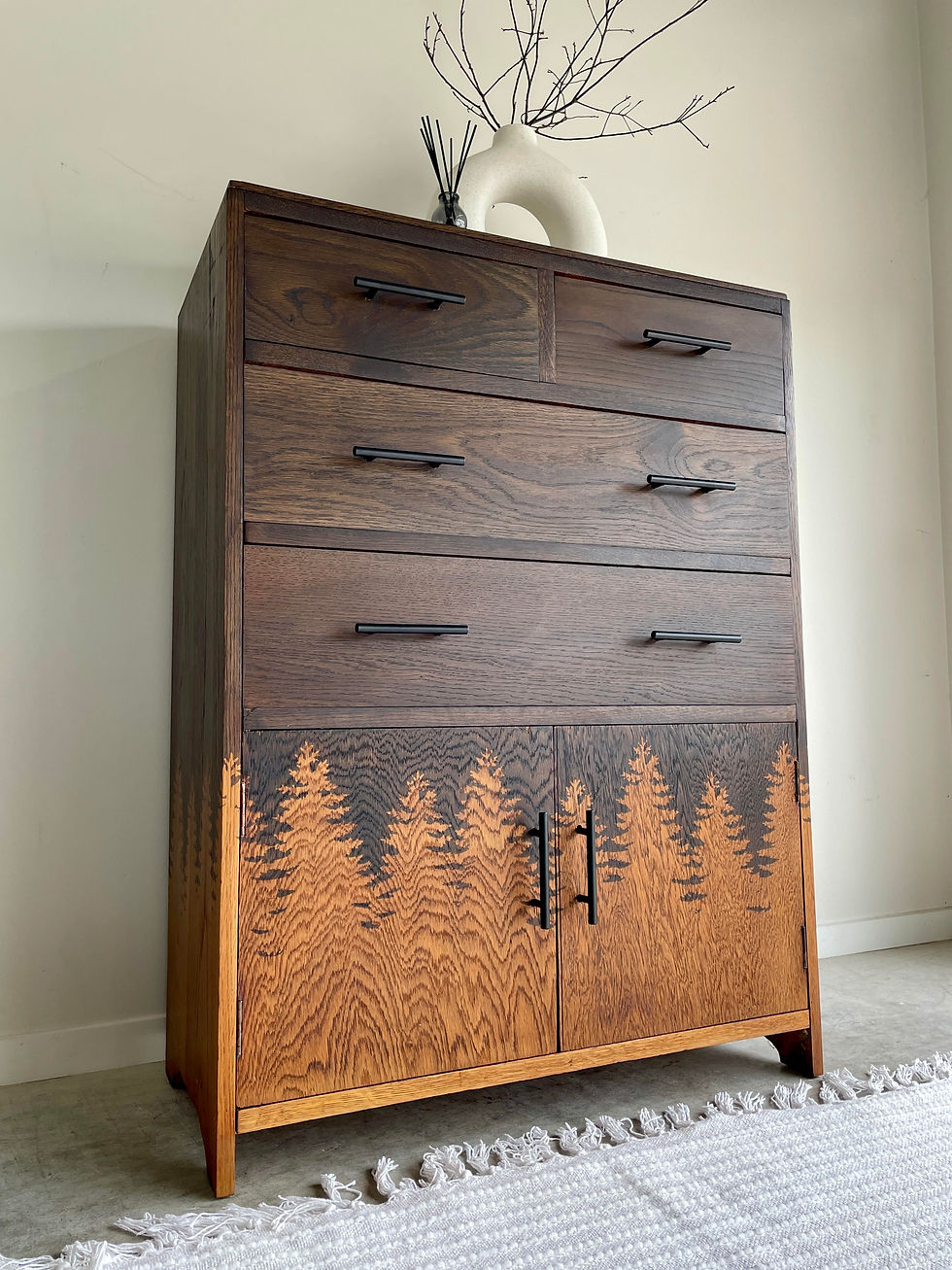Jess Sayer (Ecogem Owner)
- Editor-in-Chief

- Apr 1, 2024
- 4 min read

Do you think that creativity is part of human nature or is it something that must be nurtured and learned?
Creativity in my opinion is complex, It involves a combination of innate ability and learned skills. While some people may naturally possess a higher level of creativity, it is also a skill that can be nurtured and developed through practice, exposure to new experiences, and learning from others.
I think all people have the capacity for creativity to some degree, but the extent to which it is expressed can vary.
Can you tell us about your journey into furniture restoration? What inspired you to pursue this passion?
What inspired me to lean into this particular passion is my love for craftsmanship, design, and the satisfaction of breathing new life into old pieces. I have an intrinsic desire for creative expression which manifests itself in being creative and self-expressive through the transformation of pieces into unique and personalized creations.
As well as that, I have a deep appreciation for the artistry and craftsmanship involved in breathing new life into old furniture.

What are some common misconceptions people have about furniture restoration?

One common misconception about furniture restoration is that it is always a quick and easy process.
In reality, furniture restoration can be time-consuming and require careful attention to detail, especially when dealing with antique or intricately designed pieces.
Another misconception is that anyone can easily restore furniture without proper knowledge or skills.
Effective furniture restoration often involves a combination of techniques, tools, and expertise that requires training and/or experience to execute successfully.
Lastly, some may believe that furniture restoration is limited to repairing damage or refinishing surfaces. In reality, furniture restoration encompasses a wide range of techniques, including upholstery, wood carving, design and more, depending on the needs of the piece. Could you share a particularly challenging restoration project you've worked on? How did you approach it, and what was the outcome? One challenging furniture restoration project I worked on involved a MCM oak cabinet that had been damaged and neglected that I found at the dump. The dresser had swollen drawers, cracked glass, and broken hardware, making it a complex restoration job. My approach to this project involved assessing the extent of the damage and formulating a restoration plan.

I began by carefully disassembling the dresser and assessing each piece individually. I then repaired the swollen drawers by carefully sanding and re-sealing them to restore their functionality. Next, I tackled the cracked glass by carefully removing the glass one at a time, I decided not to replace the glass and kept it as an open cabinet. I also repaired and painted the original hardware to complete the look of the dresser.
After a week of meticulous work and attention to detail, the dresser restoration was complete. The outcome was a beautifully restored piece of furniture that retained its vintage charm while being fully functional and visually appealing. It was a challenging project, but the end result was truly satisfying, preserving a piece of history and craftsmanship for years to come.
How do you approach incorporating your own creative flair into a restoration project?

When incorporating my creative flair into a project, it is important for me to strike a balance between preserving the original character of the piece and infusing it with my unique style.
I do this by first appreciating the original design before making any changes, I take the time to understand the history and style of the piece I am restoring. I then assess the condition, make decisions about which aspects can be preserved and which can be modified to reflect my creative vision.
I choose a theme, giving consideration to the aesthetic I want to achieve. I then choose the colours, materials, and finishes that align with my vision. Whether it’s modern, rustic, or minimalist, I make sure it complements the original design of the piece.
Lastly, I experiment with techniques and add certain touches that reflect my personality.
How do you feel when others are critical about what you have created?
Receiving criticism on my work can make me feel a range of emotions, it is natural to take pride in my work and feel a sense of attachment to it, so receiving criticism can sometimes be challenging. Despite this I try to stay open-minded and do my best to view it as an opportunity for growth and improvement.
Constructive criticism can help refine my skills and enhance the quality of my work. I use it as motivation to push myself further and strive for even better results.
Receiving criticism is a normal part of the creative process, and it can ultimately help me refine my skills, develop my artistic voice, and create art that resonates with others.
As a creative individual, do you believe that you perceive the world differently from other people?
I think that as a creative individual, I have a unique perspective on the world that is shaped by my creativity, imagination, and my ability to think outside the box.
I think that being a creative person, you have a special way of looking at the world that is uniquely yours.
Creativity allows you to see things from different perspectives, notice details others may overlook, and find inspiration in unexpected places. Your unique viewpoint adds depth and beauty to the world around you.

.png)
Comments